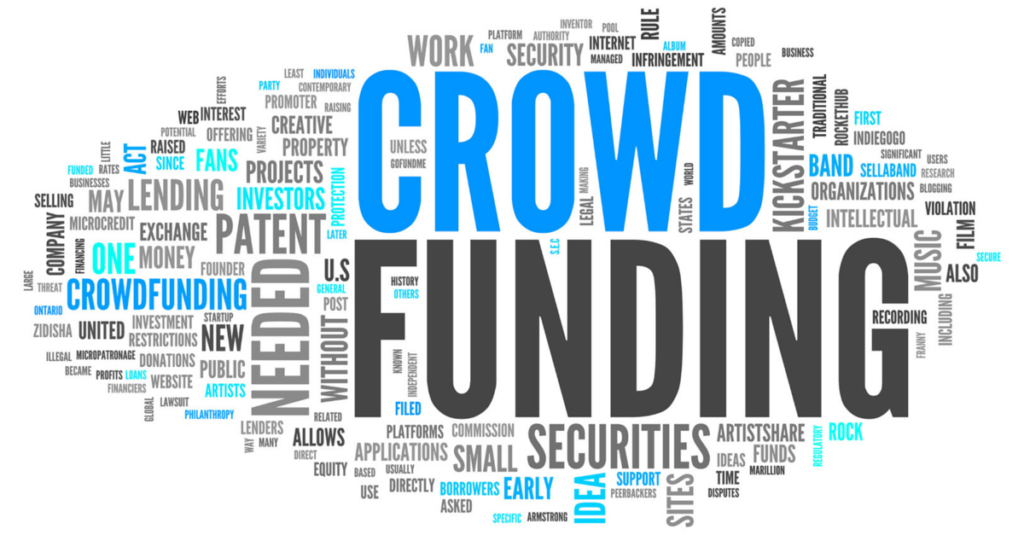Traditionally, entrepreneurs had 2 options to raise funds to start their business. They could either get a loan or give away ownership to investors. Because of the risk involved in the early stages of a small business, founders had to give up large blocks of equity to entice an early-stage equity investor. On the other hand, having to make interest and principal payments for debt financing can, at best, slow growth or even cripple a company during its fragile early stages. Enter crowdfunding as a third option.
Crowdfunding is a viable option to preserve equity and eliminate the need for debt. In a real estate deal a few years ago, a builder I know needed to raise capital to build a new residential tower in downtown Denver. With a mock-up of the finished building, some computer-generated images, and some floor plan layouts, he pre-sold many of the units at a discount to come up with the seed money he needed to get the project off the ground. Crowdfunding shares many similarities to the strategy used by the builder to raise capital and validate the concept.
In many cases, a product based crowdsourcing campaign allows people to pre-order the product before anyone else. This campaign accomplishes several vital steps for a company still in its early stages.
1. It provides the company with the capital it needs to build the first wave of products without either giving away equity, or pay back the principal, or pay the lender interest. These benefits occur when equity is most undervalued and capital preservation is most needed.
2. It validates the hypothesis that consumers are willing to exchange cash for the product. Proving the value of the product is a major tenet of the business model canvas and for a business that employs the lean start-up methodology.
3. It can rise to the surface demand for new and innovative products that might be hidden without a large number of investors actually seeing the product.
4. It attracts early adopters who become social activists, evangelizing the product to their networks and raising product awareness.
5. Tiered raises create excitement. Excitement can create a valuable feedback loop to further product improvement by exposing the product to early adopters, the people who are most likely to provide feedback.
6. It provides funding for a particular product and not the company. It is a direct investment in a single oil well rather than buying the diversified portfolio of an oil company, such as Exxon.
In addition to pre-order campaigns, some crowdfunding campaigns allow for micro ownership of an early-stage company. This creates a whole new class of investors who can buy into companies before they become large and go public. Before crowdfunding, only accredited investors (investors with more than a million dollars in net-worth or investors that earn over two hundred thousand per year in wages) could get involved with ground floor investments. Prior to crowdfunding, companies who tried to raise money from unaccredited investors would run afoul with the Securities and Exchange Commission (SEC). Crowdsourcing allows small investment levels that bypass SEC oversight, opening the opportunity for micro-investors wanting to buy into early-stage companies.
These micro investors hope these businesses will grow substantially. They hope that these businesses will then give them a significant return on their investment when the company experiences an exit event such as being acquired or going public. Before crowdfunding, even accredited investors would have to either invest large sums of money in only a few companies, which is very risky since there is limited diversity in invested capital or find a venture capital fund to invest in and lose ultimate control over the specific investment allocations in new companies. With crowdfunding, a small-time investor with only a few thousand dollars can invest in dozens of handpicked companies and achieve investment diversification, a domain only previously available to venture capital principle investors.
Setting up a crowdfunding campaign generally requires a good video demonstration of a sexy new product. Need a little help getting your idea from conception to a point where you are ready to begin a crowdfunding campaign? No problem! Companies, such as Quirky can help get you there in exchange for micro-equity stakes. However, the funding of your venture may be the easy part. The real work comes when the new company or product gets funded. Now the owners must produce the product. To do that, they must now manage a long supply chain and learn to run a real business.
You can click on each of the following steps to examine it in more detail.
- Platform Research
- Campaign Research
- Campaign Support
- Going Social
- Campaign Influencers
- Campaign Blog
- Community Building
- Designing Rewards
- Campaign Write-up
- Campaign Execution
- Campaign Follow-up
Are you considering crowdfunding for your next product?












